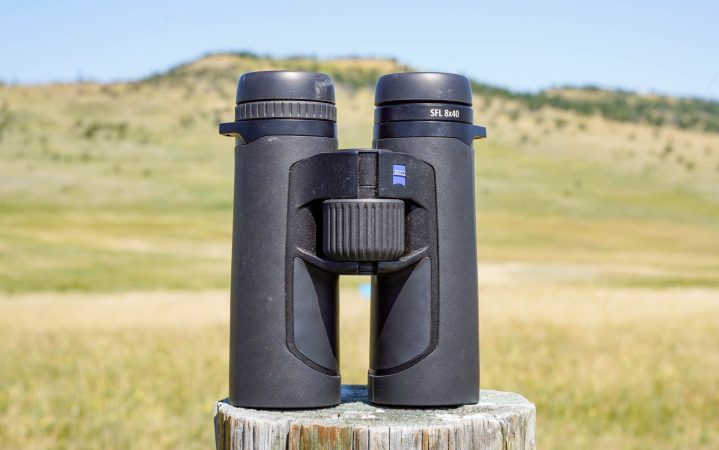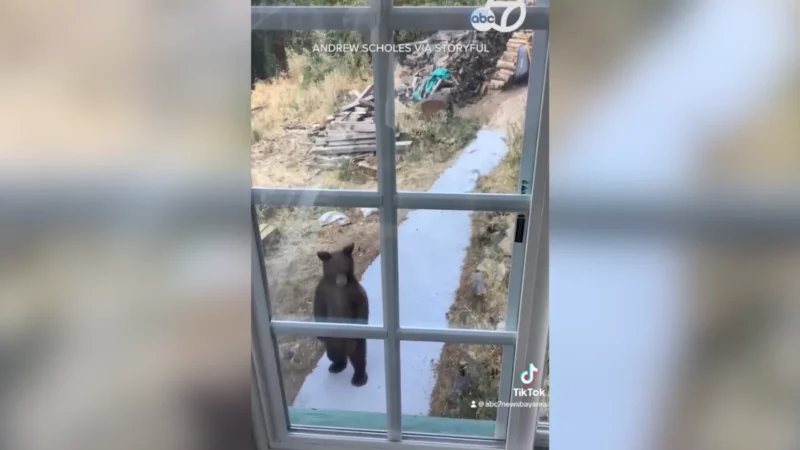New Blood Tracking App Could Change Everything We Know About Recovering Wounded Deer
You shot the buck of a lifetime and picked up a blood trail. But now, for the life of you, you can’t find the animal, and the sun is starting to set. Sound familiar? As is the case for most modern afflictions, there’s an app for that.
It’s called TRAKR, and it’s going to help hunters recover wounded deer by connecting them with experienced blood-tracking dog owners in their area, veteran blood tracker and TRAKR co-founder Shane Simpson tells Outdoor Life. For hunters in the South and Midwest, seasoned trackers with highly trained dogs are often within a half-hour radius, sometimes just a short drive away. While they might be scarcer in other parts of the country, they do exist, and the app will help hunters find them. What’s even more interesting about the app is the lethality and recovery data it will collect. When requesting a tracker, hunters enter data points like distance of shot, weapon used, projectile used, shot angle, and estimated point of impact. Trackers who end up trailing the deer input recovery data, too. The app will take all these data points from thousands of tracks across the country and build helpful takeaways that hunters can use for more effective kills and faster recoveries.
The free app launched on Sept. 8, just in time for most archery seasons across the country to get underway. It’s the official app of the United Blood Trackers, a national organization of blood-trailing dog-owners who emphasize the “ethical recovery of big game,” as they put it. Blood tracking with dogs is fully legal in all but seven states. (Oregon, Nevada, Arizona, Connecticut, Massachusetts, and Rhode Island don’t allow it, and California has exceptions.) While blood tracking is popular in some parts of the country, like the South and the Upper Midwest, hunters in other regions are much less familiar with it. Simpson and other co-founders Garrett Prahl, Greg Godfrey, and Ryan Carpenter want to change that.
“We can give answers to people,” Simpson says, noting that trackers in Minnesota alone recovered over 400 deer last season. “Without us, that’s 400-some-odd deer that are dead, 400 hunters that didn’t fill their tags and go out to shoot another deer. So now that’s 800-something dead deer instead. But we salvage those animals, and hunters put their tags on them. United Blood Trackers did over 3,000 recoveries last year, and that was just according to a voluntary survey.”
A Better Way
Blood tracking with dogs has been around for millennia. It has become more popular in the U.S. in the last five or so decades, Simpson says. When you watch his dog Callie work, it’s easy to understand why.
.embed-container { position: relative; padding-bottom: 56.25%; height: 0; overflow: hidden; max-width: 100%; } .embed-container iframe, .embed-container object, .embed-container embed { position: absolute; top: 0; left: 0; width: 100%; height: 100%; }
But a bottleneck would often occur when it came to connecting hunters in need with available trackers in the area. Social media helped alleviate that issue at first, Simpson says. But eventually, long threads of comments on posts in Facebook groups gummed up the works. Hunters were also constantly at risk of hiring unvetted, unreliable tracker wannabes. Plus, hunters had to disclose their general location to the group to figure out who was nearby. Between the scamming and the hot-spotting, Simpson and other Minnesota blood trackers thought there had to be a better way. They tried a website with a submission form, but struggled to keep up with the volume of submissions.
“A mobile app was the obvious solution, but that was very expensive. So we decided to build the website,” Simpson says. “But you need someone to manage the submissions, and you have no idea what trackers are available when. So we decided if we could build the mobile app, it would take the work out of our hands and automate everything.”
Here’s how it works. Hunters in need of a tracking dog submit a request on the app, which they can do offline as long as they’re already logged in when they leave cell service. The request pings every blood tracker in the area who fits the hunter’s needs. Some trackers might be too far away, or unavailable for the weekend, or they don’t track the species the hunter is chasing. Those trackers who do fit the criteria receive a notification and can respond to the hunter through the app. A tracker’s profile exhibits their experience level, any certifications they and their dogs have, their working rate (although posting this information is not required), and past client reviews and testimonials. Ideally, the hunter will have a few different trackers to choose from, and they can pick one that meets their needs and works within their budget. Hunters then pay a $10 finding fee to TRAKR, which directly funds the app. It’s essentially the same concept as Uber, but for hiring tracking dog experts.
The trackers are the only ones who can see a hunter’s exact location, Simpson says. (Most trackers have very little time to hunt, he adds, which means hunters shouldn’t worry too much about their public-land spots getting burned.) Hunters can even make requests anonymously if they’re embarrassed about losing a deer. But Simpson also ensures that the trackers on the app are good folks, and they’re all vetted. Simpson describes one individual tracker in Wisconsin who he won’t allow on the app, due to the guy’s record of making judgemental comments at hunters for their shot placement, choice of broadhead, or other factors that contributed to a wounded animal.
“These hunters are already in a bad situation. You don’t need to make them feel any worse,” Simpson says. “We keep the bad apples off.”
An Easy Yes for Trackers
As for vetting a tracker’s skill level, there are a few ways Simpson ensures someone is up to the task.
“If you’re certified and pass tests, that’s a good way to help get yourself on the app. But you don’t need to be certified to be on the app,” he says. “Guys in the South might have 200 recoveries with a proven [uncertified] dog. If they’re getting endorsed by a reputable source in the community, they’ll get on the app.”
If the vetting process sounds a little lax, that’s because it is. But it also helps ensure that the best of the best choose to engage with TRAKR, Simpson explains. For decades, trackers have taken a “shirt off their back” approach to the work they do, sometimes only working for tips, beer, meat, or maple syrup, which Simpson describes as a currency of choice in his region north of St. Paul. Bringing the practice further into the digital age means asking some of the veterans to modernize their practices if only slightly, and Simpson wants it to be as easy as possible for the right trackers to answer the call. He also wants to help them make the money they deserve.
“We don’t charge trackers anything. The app is 100 percent free for them at this point,” he says. “We have discussed adding a yearly subscription to use the app as a tracker, but this year we made it totally free. We wanted every tracker on here. Without the trackers, the app is useless for hunters. We want to let them get a taste and a feel for it, and sell them on it. Let them see how efficient their jobs become, and next year they’ll want a subscription.”
A New World of Data
The benefits of TRAKR don’t end with the matchmaking element. By processing a hunter’s request, connecting them with a tracker, then processing the tracker’s recovery, the app also digests vast amounts of data that could shed light on the nuances of shooting and blood trailing deer.
Right now most hunters rely purely on anecdotes from the field, not real data points when debating broadhead selection, shot placement, shot angles, or cartridge choice. The same goes for deer behavior after the shot. Old theories like “wounded deer won’t run uphill” or “gut-shot deer always run toward water” still persist. But soon, Simpson and his team will have practical data to better inform all of these deer camp discussions and debates.
“This is one of the things we’re super excited about, maybe more so than the efficiency of helping hunters and trackers connect. Those features are all great,” Simpson says. “But when we created the website with the tracking request form, we started getting so much other data. I tried to be selective in what I asked the hunters. We want to get a full picture of the hunt so we can make our best judgment on the track. But also, I would say ‘While we have you here, what broadhead were you shooting?’”
Those questions were always optional to answer, Simpson says. But a lot of data came in that way. He and other Minnesota trackers running the website would analyze it all manually and post the findings to social media. But TRAKR will do that part automatically.
“At some point, our analytics page will be active, where you can filter through all the data, by state, type of animal, sex of animal, weapon used, how far the animal traveled, even recovery rate for pass-throughs versus non-pass-throughs,” Simpson says, noting that they hope this feature will be available sometime during this deer season. “It’s definitely going to answer some questions that people have been asking for years.”
Read Next: Deer Tracking Dog Secrets That Will Help You Recover Your Buck
But it’s also going to help fill freezers, alleviate stress, and enable a nationwide community of enthusiasts and their dogs to keep doing what they love to do—find animals and answers, good or bad, for hunters in a time of need.
“Imagine experiencing the joy of filling a tag 30 to 40 times a season,” Simpson says. “When you find an animal, it feels like your hunt. You get to experience that over and over and over again. When I go out there and I can’t find a deer for a little kid, I’m bummed. But there are a lot more highs than lows. Even if you don’t recover the animal, you’re giving them some type of closure.”
The post New Blood Tracking App Could Change Everything We Know About Recovering Wounded Deer appeared first on Outdoor Life.
Articles may contain affiliate links which enable us to share in the revenue of any purchases made.
Source: https://www.outdoorlife.com/hunting/trakr-blood-tracking-app/


